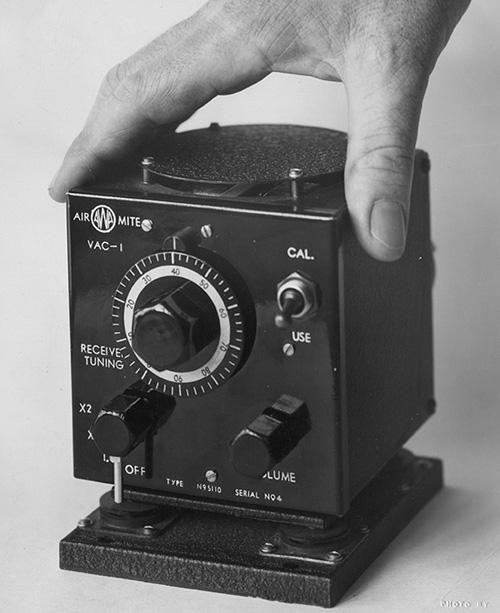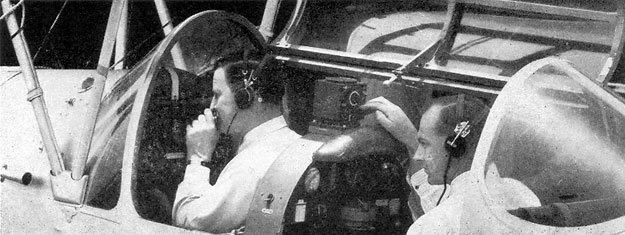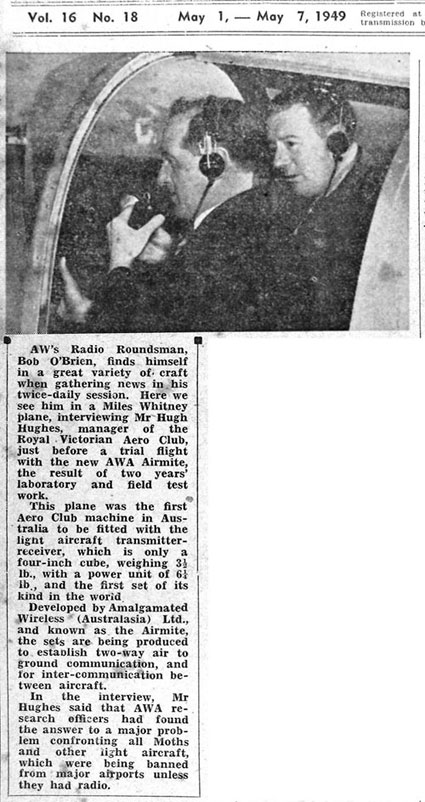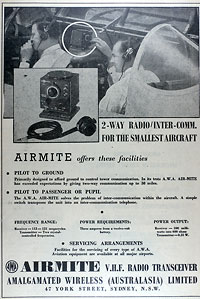
At the end of the Second World War DCA was keen to move air/ground radio
communications into the Very High Frequency band because of the much
better clarity of transmissions. One difficulty was the bulk
of the radio transceivers of the day, meaning that only large aircraft
could carry radio.
In an attempt to design a radio transceiver small enough to be fitted in light aircraft, Amalgamated Wireless Australia (AWA) produced the VAC-1 Air Mite. The unit also included an intercom function. The receiver covered the frequency band 112-122 Mcs (MHz), whilst the transmitter had two crystal controlled frequencies. It was therefore important to know what frequencies would be required for a particular flight so that the correct crystals could be installed beforehand. The unit drew 3 amps from a 12 volt battery installed separately in the aircraft.
One of these radios was installed in a DCA Tiger Moth in 1948 (below). Testing by DCA revealed that although the transmitter output was only 0.25 Watt the unit was capable of maintaining reliable two-way communications at 30NM range from 3,000 ft or above. The unit was demonstrated to aircraft owners and operators at the Wagga Flying School in April 1949.
Despite this, light aircraft were still operating into the major capital city airports without any radio at all into the 1960s using visual signals for control.

Right: The first Air Mite installation was made in Royal Victorian Aero Club Miles M.11A Whitney Straight VH-ABN, as detailed in this journal clipping.
(Photos: Top - Milton Kent/CAHS collection; Bottom - from DCA Annual Report 1948-1949 p.76)


< Click on the image at left to see a 1949 advertisement for the Air Mite radio
Back to the main Communications
& Navigation Index
If this page
appears without a menu bar at top and left, click
here
![]()